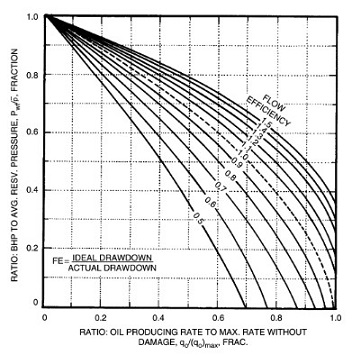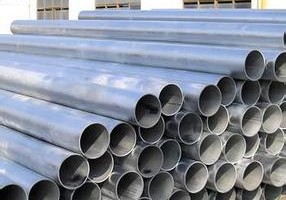Productivity index is a metric to evaluate efficiency of oil wells. It provides details of rate at which the oil well can produce crude oil. It is basically a relationship between the flowrate of drilling fluid such as crude oil and pressure drop across the reservoir. This post explores significance of productivity index of oil well along with how to calculate it and factors affecting it.
Table of content:
1. What is productivity index?
2. Productivity index formula
3. How to calculate productivity index?
4. Factors affecting productivity index
What is productivity index?
With reference to the oil and gas production wells, the term ‘Oil Well Productivity Index’ is an indicator of ability of the reservoir to produce fluid flow in relation to the reservoir pressure.
Flowrate refers to the volume oil given well can produce in the given time. Flowrate of drilling fluid or oil depends on reservoir characteristics, wellbore design and operating conditions. A higher flowrate means that the large volume of oil is extracted from reservoir.
Pressure drop across the reservoir refers to the decrease in pressure when oil flows from the reservoir to the surface. Pressure drop depends on the properties of the reservoir and flow dynamics within the well. A larger pressure drop refers to the higher resistance to the flow within the wellbore.
Over a longer timescale as the oil and gas reservoirs are depleted, the reservoir pressure drops down. Hence flow and pressure loss also change. But this depletion can only be considered over a timescale of a few years. For shorter time scales, the hydrocarbon fluid flow as well as the reservoir pressure can be considered to be constant. This is known as pseudo steady state for the producing well.
Productivity index formula
The productivity index can be mathematically expressed as the ratio of volumetric flow produced by a well (bbl/day) to the pressure loss between reservoir and bottomhole (psi).
PI = Q/(PR – PBH) bbl/day/psi
Where, Q = volumetric flow produced by a well (bbl/day)
(PR – PBH) = Pressure drop between reservoir and bottomhole (psi)
A higher PI indicates that the larger volume of oil can be extracted per unit pressure drop.
How to calculate productivity index?
Let's check step by step procedure to calculate productivity index.
- The first step is to determine average reservoir pressure at bottomhole or at the depth of producing zone. This pressure represents the driving force that forces oil toward the wellbore.
- Next the reservoir pressure is calculated. The reservoir pressure can be determined by measuring the pressure at the wellhead.
- Based on these two pressures, pressure drop is calculated. Pressure drop represents the resistance encountered by drilling fluid or crude oil when it flows from the reservoir to the wellbore.
- After that the flow rate is measured by monitoring the production rate over a specific period. Flowrate represents the volume of oil produced from the well within specific interval of time.
- Based on the determined values PI can be calculated to measure the well's efficiency.
Factors affecting productivity index
The productivity index (PI) of an oil well is influenced by a multitude of factors. Explore some key factors that impact PI.
Reservoir Characteristics: Common reservoir characteristics which affect the PI are permeability and porosity. Permeability is the ability of reservoir rock to allow the fluid flow and porosity is the volume of pore spaces within the rock. A highly permeable reservoir with high porosity enables higher flow rate which results in higher PI.
Wellbore geometry: Geometry of the wellbore such as length and diameter of the well affects the flow dynamics. This geometry determines the contact area between the wellbore and reservoir. This impacts extraction rate of crude oil and eventually influences PI.
Fluid properties: Properties of drilling fluid significantly affects PI of oil well. High viscosity fluid requires more pressure to flow through the reservoir that results in larger pressure drop and lower PI.
Operating conditions: Operating condition maintained in the crude oil production well manipulates the flow dynamics and pressure drop across the reservoir. This affects the PI of oil well.





